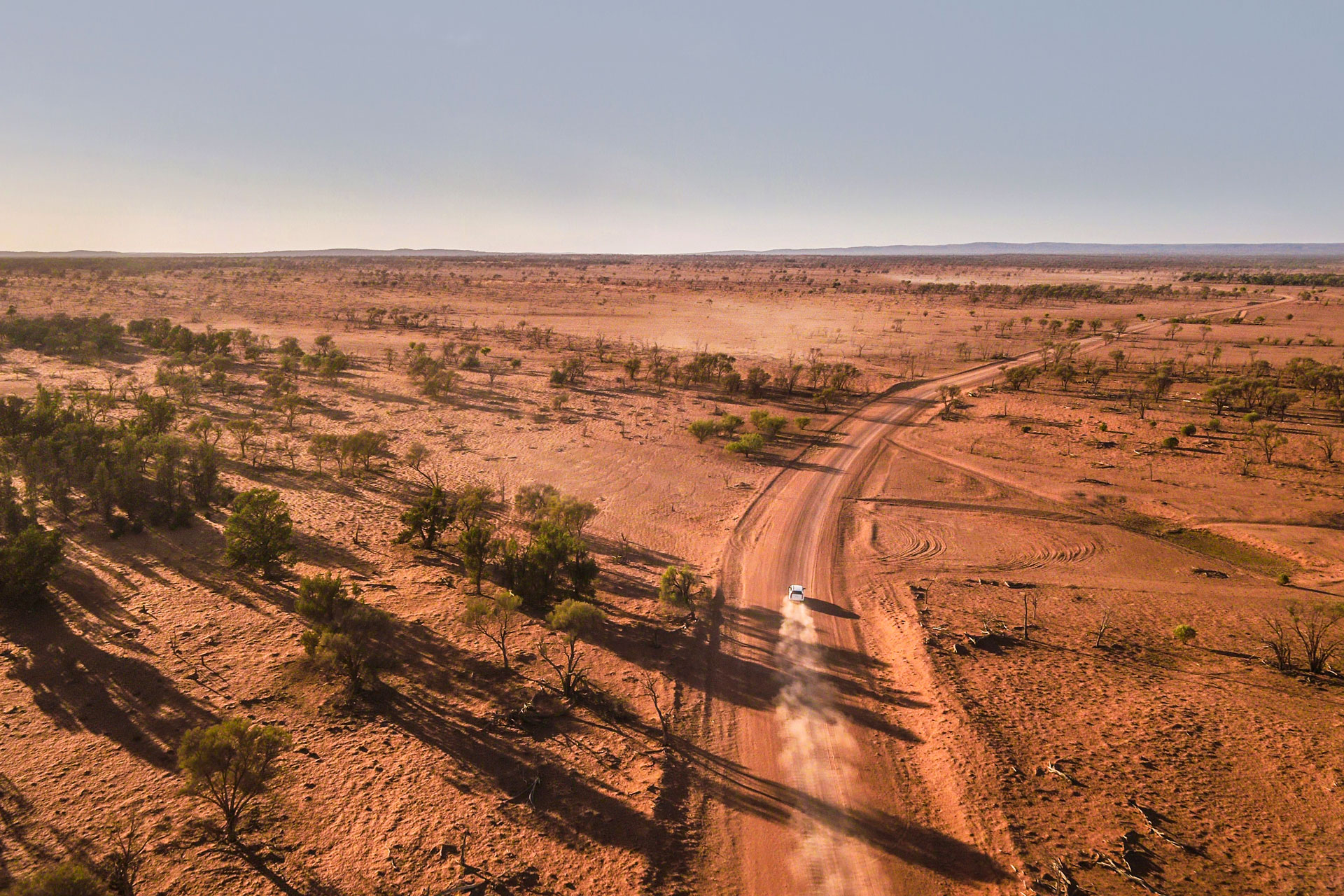Outback NSW is a place where outdoor adventure is quite literally in your backyard. Surrounded by the rugged beauty and deep red earth of the Australian outback, the region is home to several stunning National Parks. Each Park has its own unique landscape, wildlife, and outdoor recreational opportunities. Here’s a guide to some of the national parks near Broken Hill that are well worth exploring.
Mungo National Park is a UNESCO World Heritage-listed site that boasts an incredible landscape of dunes, scrubland, and dry lakes. Located to Broken Hill’s southeast, the park is home to some of the most important archeological findings in human history.
The Park’s lake, Lake Mungo, was the final resting place for Mungo Man and Mungo Lady – two humans that lived around 40,000 years ago. Mungo Man is the oldest human remains found on the Australian continent, and one of the oldest in the world. Mungo Lady was cremated, and is the oldest example of a ritual burial anywhere on the planet. Along with the discovery of human footprints dating back around 20,000 years, Mungo National Park tells a story of a civilization that has lived on and cared for this land for countless generations.
Visitors can take a tour of the park with an Aboriginal guide, who can offer insights into the area’s cultural and historical significance. Other highlights include the Walls of China, an otherworldly formation of sand dunes that have been shaped by the wind and time.
Kinchega National Park is an area known for a multitude of birdlife especially when the lakes are full, as well as a rich pastoral history. There are plenty of self-guided tours around the park and lakes, but be sure not to miss the Kinchega Woolshed as you travel through.
The real star of Kinchega National Park though is the stunning Menindee Lakes, a system of 9 large, shallow lakes that make for some of the most incredible photo opportunities you can imagine. A still day here will turn the surface of the lake into a mirror to the sky, a vista that is sure to take your breath away.
Sturt National Park is one of the largest national parks in New South Wales, covering an area of over 325,000 hectares. The park is characterised by its rugged terrain, which includes deep red sand dunes and rocky mountains. Visitors can take a 4WD tour of the park, hike one of the many trails, or simply take in the stunning scenery.
The park’s northern and western borders are lined by the famous Dingo Fence. The longest fence in the world, the Dingo Fence was built in the 1880’s to keep dingoes away from pastoralists’ sheep flocks.
The northwest corner of the park rides both the South Australian and Queensland borders at Cameron Corner. Jump across the boundaries of all three states here, and appreciate the remoteness of this tiny marker in the desert.

Mutawintji National Park, is home to ancient landscapes, fascinating flora & fauna and a rich Aboriginal heritage spanning back tens of thousands of years. The gorges, rockpools and caves of this land served as important cultural sites for First Nations people, who used the area for large gatherings, ceremonies, trade and more.
Evidence of the immense spiritual and cultural importance of this site can be found in the millennia-old hand stencils, petroglyphs and other rock art that can be found here.
There are plenty of fantastic walking trails that you can follow yourself, but for a truly unforgettable experience, book a guided tour with Mutawintji Heritage Tours. Wholly owned and operated by local Aboriginal people, a tour with Mutawintji Heritage Tours will introduce you Aboriginal Dreamtime stories, cultural values and history while exploring the picturesque scenery of the park.